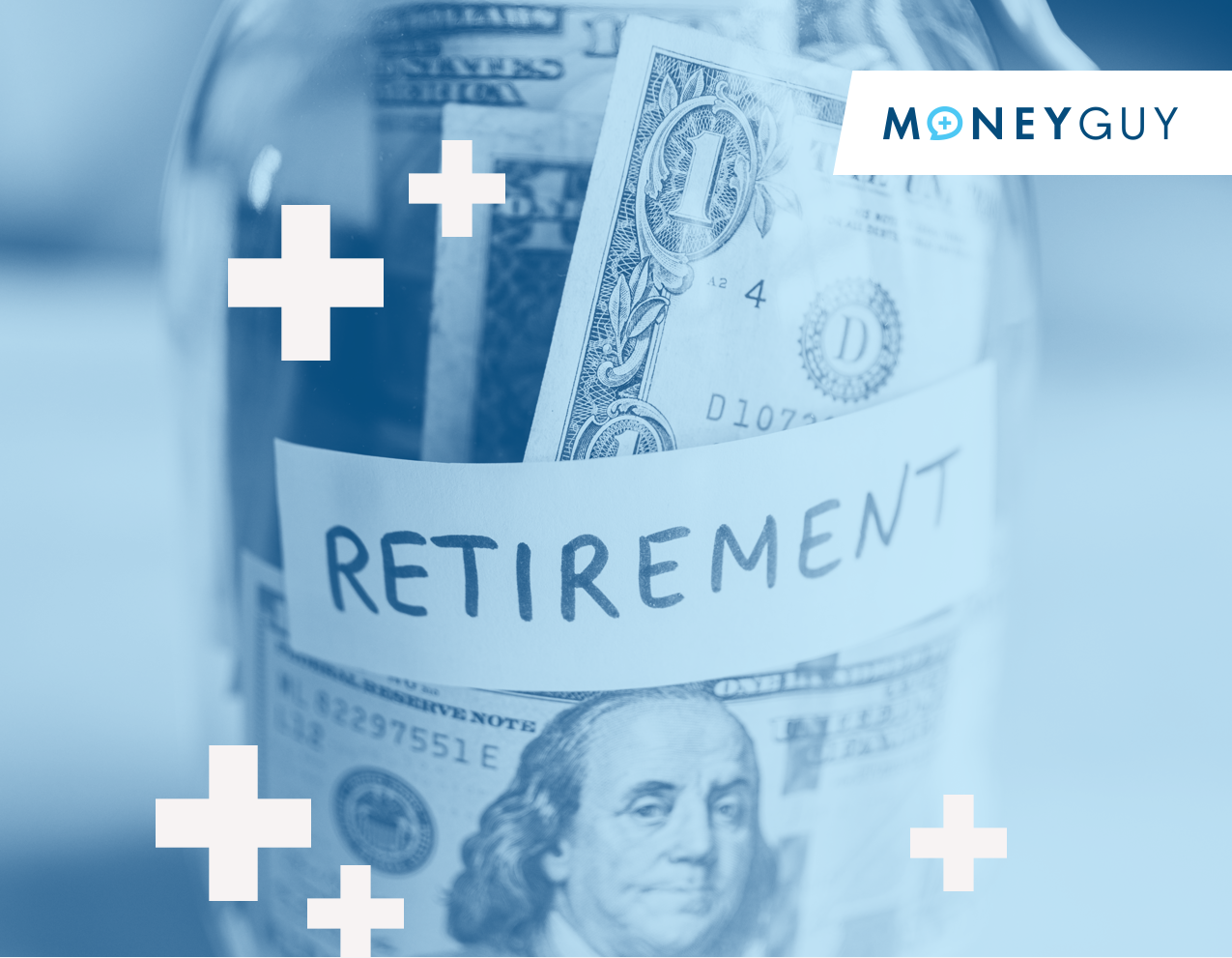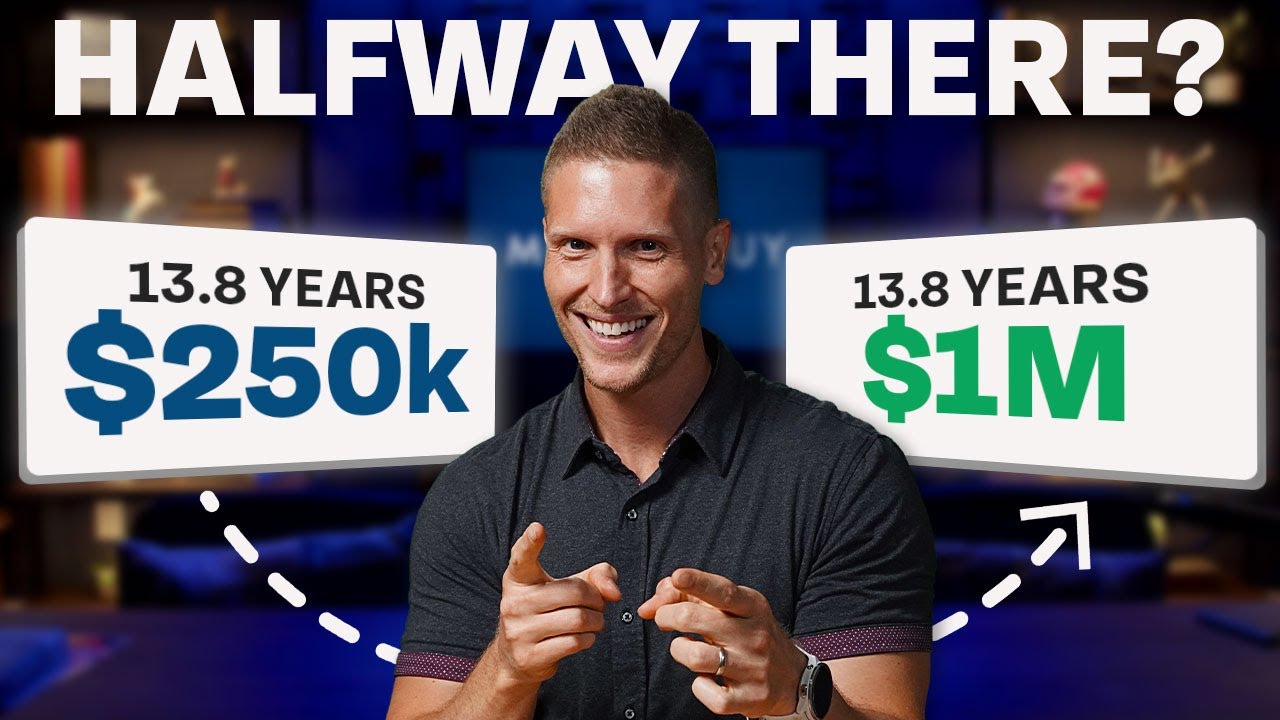Alright, so let’s now keep it going. As we get into our 30s, as we get into this season and station of life, how should we be thinking about our three buckets? Because what happens in our 30s, life gets a little bit messy. You start having some success, your career takes traction; however, you get distracted completely by life. And what we mean by that is what we affectionately call the messy middle. This is where, look at your commitments, they go way up, your disposable income, yes, it also went up, but man, do, oh man, do you have. Not only do you have the new house, you have the new marriage, you have kids on the way, you have a thousand different other things. Also, all those pay raises came with some type of commitment to your employer or your business or your endeavor that you’re getting paid for. All those things create a lot of chaos. Not only are you short on money, short on time, our biggest takeaway when you’re going through these financial stages of life, do not neglect this decade. It’s easy to lose focus with all the life things that you actually lose the understanding that we need to make something happen. Okay, so when you think about this and when you think about what you should focus on, odds are in your 30s, your tax-free bucket is going to look a little bit different. I mean, there’s a really good chance that you are now, or if you look at your whole household, are now making too much to be able to contribute directly to a Roth IRA anymore. The income phaseouts in this year 2024 are $146,000 to $161,000 for single individuals, and for married couples, it’s $230,000 to $240,000. But if you have the right account structure, I mean, you don’t have outside SEP IRA or IRA rollovers or SIMPLE IRAs, you may very well be able to do backdoor Roth contributions where you do a non-deductible traditional IRA contribution and then you convert that non-deductible basis you have in the IRA. It’s a backdoor way of building up those Roth assets. So you may want to consider doing that. The other thing that you may want to think about in your 30s is if you are getting into these higher income situations, it may not make sense for you to do the Roth 401(k) or Roth 403(b). You may want to switch to the pre-tax side. These are all decisions you’re likely going to be facing and trying to navigate as you get into this decade of your 30s. I feel like Lil Wayne would be so disappointed with everything you just shared because the Young Money Millionaire, I mean, you just threw water and saying, “Man, if you’re going to do Roth, you’re probably going to have to do it through the back doorway because your income’s gone up.” That’s kind of an excellent problem though. It is a good problem to have. And then the other thing is now with your 401(k), the current tax deduction could be pretty valuable for you. And then I’m going to throw even more cold water on this whole Young Money Millionaire and the fact that your health savings account, since you are probably in the decade of growing your family. Look, I love the triple tax advantage. It is a super exciting thing; however, if you are having babies and growing family and other things like that, those things are expensive. You might need that Cadillac health insurance when you go through annual enrollment. Don’t just do what you did last year; actually look at your healthcare needs in the coming year and make sure that’s reflected. And if you know you’re going to have a child or grow your family in the coming year or have more, you know if there’s some medical procedures or other things you’re going to be doing, take that into account because it might be time to walk away temporarily from that high deductible plan and consider going Cadillac just in this stage of life. But while you are walking away from the little Young Money Millionaire, there are other options and opportunities for you. When you think about your tax-deferred bucket in your 30s, this one may become a much larger planning tool because now as you do get into higher tax brackets, if you look at your your marginal federal rate and your marginal state rate and it’s above 30%, every dollar that you put into your employer plan could save you 30 cents in taxes. You can think about that like a 30% imputed rate of return. So if you have a side hustle or maybe you’re a small business owner, the tax-deferred bucket can be huge in keeping more money on your net worth statement instead of having to send it out to Uncle Sam. So make sure you’re thinking through what types of contributions make the most sense for me in this stage of life. Yeah, and as we shared, you’re probably getting a little more success in your 30s. So you may have even started an endeavor. If you’re self-employed, do not lose sight of the fact that maybe a solo 401(k) is very easy to set up, a pre-tax solo 401(k). Much harder to set up a Roth 401(k) with a small business because then you have to go through the testing and all the other stuff. So just don’t overlook all the opportunities that could potentially be on the tax-deferred or pre-tax version of 401(k)s in your 30s. And now when it comes to the after-tax portion, now there’s a chance that you might start saving in this account in your 30s, but maybe not. You may still be hitting your 25% in the tax-free buckets and then the tax-deferred buckets. Or maybe you’re someone who works for an employer that pays out RSUs or options or your part of a stock purchase plan. Maybe there’s something like that going on. Well, if you are participating in those types of programs at your employer, then there’s a chance that your after-tax bucket is building up. So you want to make sure that you’re paying attention to it. But it’s still okay if its bucket is not building yet. Remember, the financial order of operations exists for a reason. We really don’t start thinking about the after-tax bucket until we start getting to step seven and eight. But I do want to put, make sure everybody is aware, emergency reserves because that’s step one and step four of the financial order of operations. That’s completely separate. That’s not part when we talk about after-tax or your taxable brokerage accounts, whether it’s individual or a joint account. This is for money you are investing for the long term. Steps one and four, those emergency reserves, those are probably in like a high-yield savings account or it’s a corded off section of your money market mutual fund that’s at that brokerage account. But it is not the same amount of money that’s being invested for the long term. Alright, so let’s check in with Manny. See how Manny does throughout his 30s. As a reminder, Manny started investing 15% at 25 and by the time he gets to 35, he’s maxed out his savings at 25%. He was making $50,000 a year at 25 and every year he’s gotten a 5% pay raise. He follows the financial order of operations step by step. He does not get out of whack with the order of operations and he gets a dollar for dollar match from his employer of 5% if he puts in 5%, his employer puts in 5%. By the time he gets to the end of the 30s decade, by the time he’s age 39, his tax-free bucket has now grown to almost $440,000, comprised of his Roth IRA, his HSA, and his Roth 401(k). His tax-deferred bucket is now almost $106,000. We already mentioned that in his 30s at age 35, he hit that 25% savings rate. Before you jump in and show the wealth score, there’s something I just have to share. No, no, no, but this is important. I talk about boiling, boiling point. However, you but, but it is because I think so many people get excited. Somebody will get them excited in their 20s about saving and investing, but then we’ll have a downturn in the market and people give up. And I’m going to show you because we’re about to unleash the 30s because this money has now been working for going on close to it’s 15 years, 14 years. That’s right. And um, and it’s just amazing you’ve made it to, you’ve let your money have enough time to where it’s catching traction. Wait until you see what this opportunity looks like now. All right, so check this out. His wealth score when you take his age times his income and divide it by 10 plus the number of years he has until 40, his wealth score is now 1.55. So he is now well doing much better than an average accumulator of wealth and is very much on the way to being a prodigious accumulator of wealth. When you look at the total portfolio value, $546,000 at 39 years of age, that is not old, and that’s not that he’s done anything remarkable. He just started saving at 25 and he stayed incredibly consistent in how he was doing. Don’t don’t don’t don’t underplay how valuable you say he didn’t do anything remarkable. We know as you shared it previously, 56% of Americans can’t come up with $1,000. True. So I think this is remarkable because people just do not do these small decisions today. And that’s what you ought to be every day. You ought to wake up and say, what small decision am I making today for that great big beautiful tomorrow? And I think that that’s the part that is extraordinary is that Manny is waking up and saying, what small decision? And those small decisions stack upon themselves. And as you’re stacking those small decisions, you’re going to hit some pretty exciting milestones. In Manny’s case here, he hit his 25% savings goal, he maxed out his Roth IRA for the first time in this decade, and he crossed over $500,000 in portfolio value. I want you to think about that. Two things happened that are so unique. This is the first time in this decade that he maxed out his Roth IRA. And in that same vein, he crossed over half a million dollars of portfolio. That’s remarkable. If you cannot get lost in the messy middle, it’s amazing the things you can accomplish throughout this decade. Well, yeah, I also think about it. Probably, you know, we’ve done the slide and we’ve done the show, put it on Twitter and everywhere else, Instagram. The first $100,000, even if you’re putting in 10 grand a year, might take you seven years. But they start building upon themselves, and it happens faster and faster and faster. The fact that Manny is five times over that first $100,000, that boiling point I was talking about, this is going to get exciting in his 40s too. And you know, one of the things that we love to track, we actually put it on the dashboard of our net worth tool. If you don’t have our net worth tool, go out to learn.moneyguy.vn. Um, I love that he’s already crossed over the average accumulator of wealth. He’s well on his way to becoming a prodigious accumulator of wealth, and we’re still in that modified formula. If you’re looking at your wealth score, it’s your age times your income divided by the denominator. The Millionaire Next Door uses 10 because you’re under 40, and we want to make sure we give respect to the time it takes. It’s 10 plus how many years you are until you reach 40. If you’re 30 years of age, that denominator is now going to be 20. It’s going to be the 10 plus the 10 years to reaching 40. If you’re a person who’s 39, it’s going to be 11. So just be aware of that modification as you’re making this adjustment.













